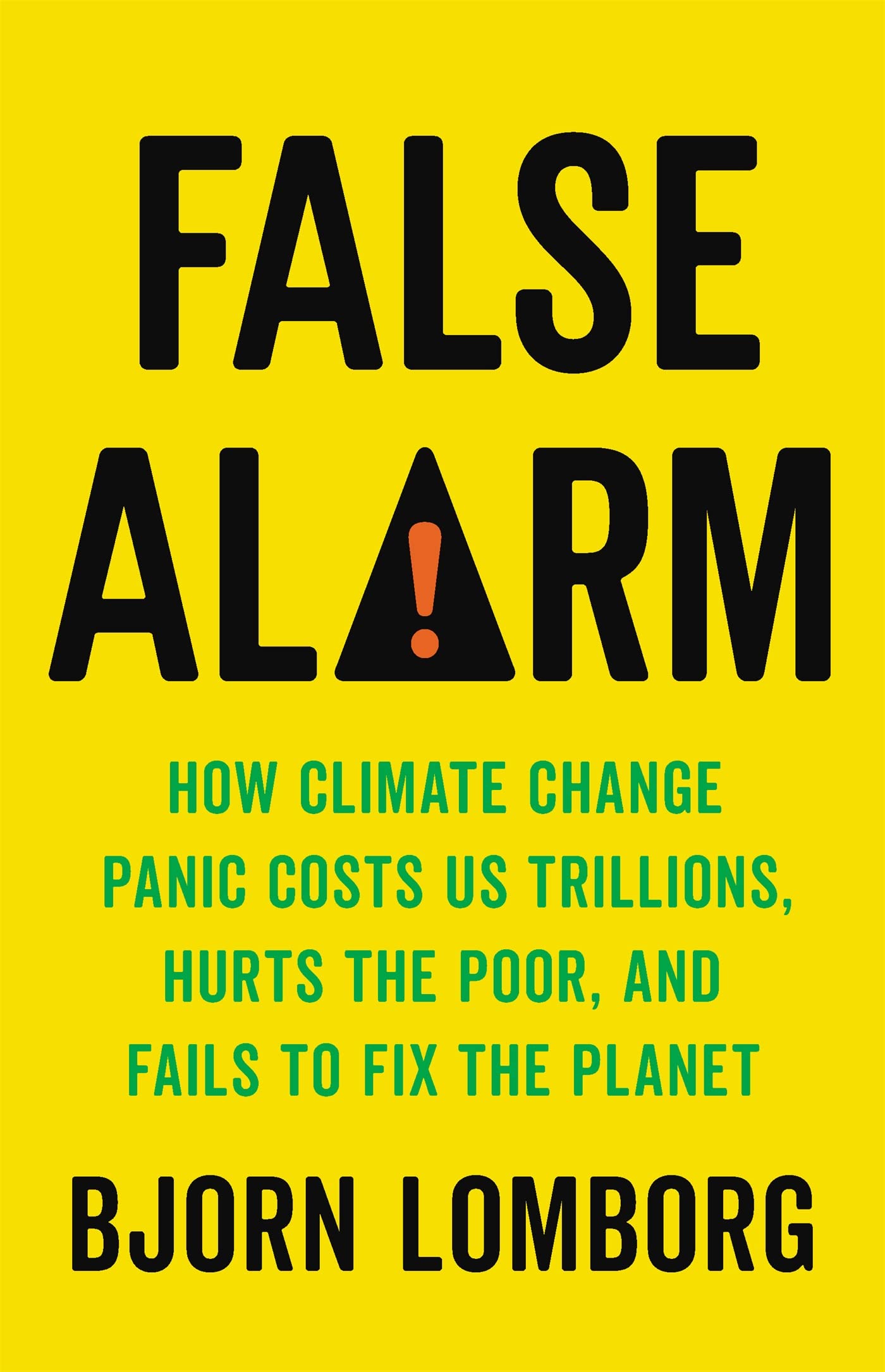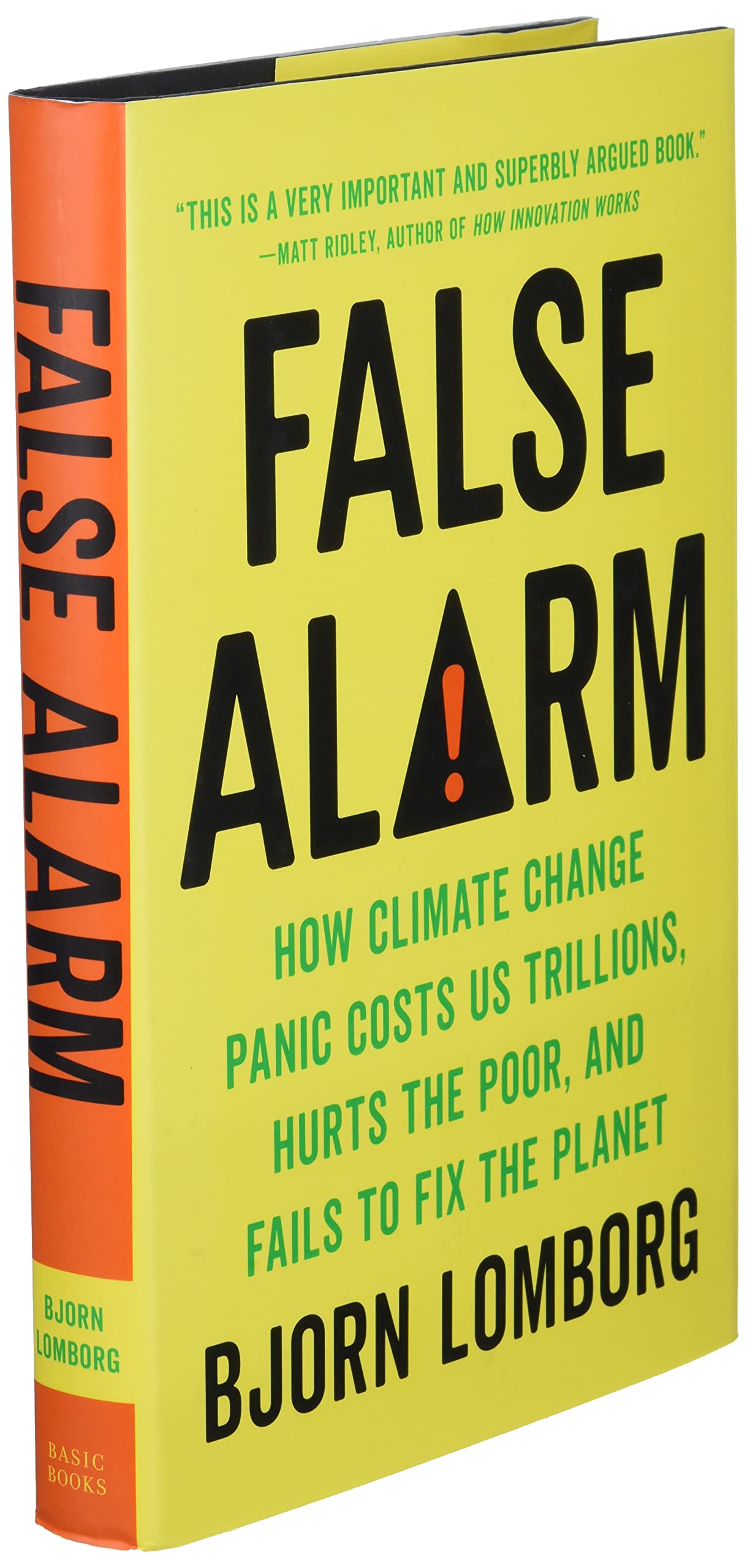Customer Services
Copyright © 2025 Desertcart Holdings Limited
Desert Online General Trading LLC
Dubai, United Arab Emirates





Full description not available
R**L
Superb
Extremelly well written, it brings facts to light which are overlooked or overstated by the current narrative. And more importantly, it points to sustainable solutions.
B**A
Significant ideas backed by significant data to be significantly ignored
Anyone familiar with Bjorn Lomborg will know he believes that any climate change mitigation comes at a cost and that we should analyze that cost versus potential benefits. Lomborg seems to use widely available information, mostly from the United Nations. I cannot attest to the accuracy of his numbers but, even if remotely correct, it seems like we should heed his advice. However, I fear that only louder, more hysterical Scandinavians will be listened too.In reviewing literature that ran counter to this book's claims, I could only find criticism by a Jeremy Grantham-backed think tank. Grantham himself seems to be a neo-Malthusian so I am skeptical of his views as well as the terseness of the ripostes so far written. However, of course, we should not be dogmatic if better work does come out.My Summary of This Important Work:The public's current perception of climate change is based on ill-informed fear. The media prints the scariest sounding narratives, scientists get funding for apocalyptic sounding research needs, and politicians push budget busting subsidies doled out to favored constituents. As a result, four in ten in the US believe global warming will lead to mankind's extinction and persistent peddlers of pessimism such as Prince Charles and Al Gore ignore their own previously wrong prognostications to issue new, phony predictions.These predictions never seem to come to fruition. Oil prices are very low as well as a slate of other finite commodities. Heating of the planet has extended longevity (heat causes .5% of deaths vs the 7% of cold), has led to a greening of the planet and has seen some islands actually gain land area through coral erosion. The severity and number of hurricanes, flooding, droughts ("globally, the number of consecutive dry days has been declining for the last ninety years") are flat or declining. Even if there is now more developed areas to be destroyed during natural events, the fact that people are richer and have better housing means the costs keep decreasing. Polar bears, nature's symbol of the toll of global warming, are seeing a population increase after hunting regulations were implemented and they seem well placed to survive an era of warmer weather like they have in previous periods. The UN Climate Panel itself stated, "for most economic sectors, the impact of climate change will be small relative to the impacts of other drivers." Even agriculture is estimated by the UN's FAO to see grain production increase but just by a little less than it would have with no temperature rise (44% vs 41%).Politicians excel at making bold commitments not whetted in reality. New Zealand proclaimed a zero emission country by 2020 but failed to even reduce emissions. Not deterred, a predecessor has made similar commitments by 2050, promises that would cost 16% of GDP to just reach half of these ambitions. This is not unique to the Kiwis as Japan, Mexico and South Korea are all vastly missing their targets. The US was no where near meeting its obligations under the Paris Agreement even before the current administration's roll backs. China has tripled emissions since 2000. Even a complete rich world ban on emissions would not effect temperatures in the near term. Overall, the Paris Agreement would cost more $1 trillion / year to implement by 2030 and have a very muted impact on overall temperatures. And the one country who has reduced carbon emission the most, the US, did it with no adherence to the agreement as fracking natural gas has taken off.Its important to remember the effect of policies on the poor. The poorer classes in rich countries tend to live in more remote areas and must spend more of their income on fuel costs. Germany's energy costs have doubled over the past two decades as they have shifted to renewables. Insisting that developing countries do not develop seems cruel and unethical. This leads to the Schelling Conjecture: getting richer is probably better for the world's poor than focusing on emissions. Lomborg notes: Expanding immunization and curbing tuberculosis, improving access to modern contraception, ensuring better nutrition and more education, reducing energy poverty—all of these are well within our power and, if we focused on them, could alleviate suffering for huge swaths of the world’s population right now.What should be done?We should tax emissions in line with Nordhaus' DICE model that balances economic growth and development with a muting of the worst case climate scenarios. That means a seven degree rise by 2100 at a cost of global GDP of 2.9% (noting GDP will be much larger at that point).We should avoid favoring certain renewables: the IEA estimates that by 2040 after $4 trillion has been spent, solar and wind will only account for 5% of global energy. We subsidize electric cars for about $10k per car yet get only $48 in carbon reduction (as measured by RGGI prices). Its also important to note that renewables could also mean wood which may be worse of the environment.We should understand the rebound effect: that certain efforts to save carbon by reducing consumption may mean we consume in other more carbon-intensive ways.We should adjust: both Bangladesh and Holland are vulnerable to flooding but the Dutch have mastered mitigation. Sea levels have already risen about a foot over the past 150 years. Coastal defenses such dikes, increasing sand on beaches, and things like NYC's sea walls and storm barriers protect coastline. Use of reservoirs and curtailing irrigation during droughts, air conditioning purchases in warming areas, removing wood near homes, and painting rooftops that significantly cool cities should all be done.We should invest in green technologies and geoengineering. This is where this book is at its most interesting and most speculative. Each dollar invested in green technology could avoid $11 of climate change. Each dollar invested in geoengineering could see $2,000 worth of gains. The list of ideas here are endlessly fascinating: emitting sulfur dioxide, storing energy in molten salt, creating new types of nuclear reactors, air capture, making clouds whiter and seawater spraying boats are all mentioned.
O**O
Very informative book.
Discover the myth of climate change.
J**E
counterpoint to climate crisis
there is another side to climate science..
A**Z
A Must-Read!
A refreshing, logical take on climate change that needs to be addressed more. Definitely recommend!
A**Z
A must read!!
If you’ve ever wondered about all the hype around climate change, read this, a very well researched and presented thesis. Well done to the author:)
D**E
An objective analysis of the Climate Change Grift
The author, Lomborg, provides an excellent analysis of the climate change grift with an objective and fact-based presentation based on numbers and real-world data. While the author does believe in man-caused climate change via CO2, he admits that it is nowhere near the problem the grifters are making it out to be. One after another he addresses with real world data the climate change mantra from increased wildfires to flooding and the polar ice caps melting and shows in detail how these problems are being blown way out of proportion by charlatans and propagandists. While he believes CO2 is a problem, it's not THE problem...he does not let his ideology get in the way of presenting real facts that expose the climate grift for what it is - a grift and a con. While Lomborg leans to the political left, this is a surprisingly and refreshingly objective analysis of the climate change agenda from that ideological position. Lomborg shows how the world is not going to end in 12 years (or 500 years) so everyone can just calm down and spend a couple days reading this book to bring some context and perspective to the discussion. Lomborg assures us the climate is changing, and it has been for millions of years. We're all going to be okay, and we should step back and examine the real-world problems associated with it rather than just fixating on some nebulous carbon dioxide levels we can't affect, because those real-world problems are something we can fix...and should.
M**S
realistic!
This book brings realism and sanity to a controversial topic. Every policy has a cost for an expected outcome. Born does a great job breaking this down.
B**
It’s what we’re not being told
Excellent read. A well researched and written book on climate change that makes sense. We’re being hyped by media and climate activists who don’t tell the whole story and focus on the alarming negatives. The planet and humanity is going to be fine. There are rational solutions to the planet gradually warming.
M**O
Full transparency
Lomborg is completely transparent about his sources and models. That makes it possible to question his data or his conclusions. This means a strong commitment with his views. This is integrity. And that is why this book is a must read to have climate and development conversations.
A**E
A must read!
Read this book to wake up from the climate change scam.
M**L
Det alla borde känna till
Kunskap i detta område är viktigt då det florerar så mycket alarmism på tveksamma grunder, och förslag på mycket ineffektiva och kostsamma åtgärder som inte leder till en bättre värld.
M**A
A must read
Lomborg is as always reliably strong on data and short on empty statements. This book is vaccine against both denial and fanaticism.
Trustpilot
3 weeks ago
3 weeks ago